In the pursuit of sustainable living and reduced energy consumption, homeowners are increasingly turning their attention to every part of their property that influences energy efficiency. One often-overlooked element is the garage door. Since garages are typically connected to the main structure of a home, they can significantly impact the overall thermal balance and comfort levels indoors. This is where garage door insulation plays a critical role.
For homeowners asking, “How does garage door insulation save energy?” The answer lies in its ability to reduce heat transfer, maintain interior temperature stability, and ultimately lower energy costs. Partnering with experts such as The Foam Company ensures access to high-quality insulation materials designed to enhance comfort and efficiency in any season.
1. Understanding the Importance of Garage Door Insulation
The garage door is one of the largest moving parts of a home and can act as a major thermal weak point if left uninsulated. Metal garage doors, in particular, conduct heat and cold easily, making it challenging to maintain consistent indoor temperatures.
Insulating a garage door minimizes heat transfer between the interior and exterior environments, creating a thermal barrier. This not only keeps the garage warmer during winter and cooler during summer but also helps adjacent rooms maintain a stable temperature. As a result, less energy is required to heat or cool the entire home, directly contributing to energy bills reduction.
2. How Garage Door Insulation Improves Thermal Efficiency
Thermal efficiency is the measure of how well a structure retains heat or resists temperature changes. Insulating your garage door increases this efficiency by adding a protective layer that prevents outside temperatures from penetrating the home.
When air conditioning or heating systems are constantly compensating for fluctuating temperatures, they consume more power. Insulated garage doors slow down the heat exchange process, easing the workload on HVAC systems. This not only enhances comfort but also prolongs the lifespan of energy systems, making it a smart long-term investment.
In climates where temperatures fluctuate dramatically, insulation becomes even more essential. By maintaining a more consistent internal temperature, energy efficiency improves, and the overall home environment becomes more comfortable and eco-friendly.
3. Understanding Insulation R-Values and Their Role
When evaluating insulation materials, one key factor to consider is the R-value. The R-value measures the insulation’s ability to resist heat flow. The higher the R-value, the better the insulation performance.
Garage door insulation typically uses materials such as polystyrene or polyurethane, both of which offer strong R-values and excellent thermal resistance. Choosing the right R-value depends on several factors including your regional climate, the structure of the garage, and how frequently it’s used.
A higher R-value insulation panel on a garage door significantly reduces unwanted heat exchange, promoting superior energy efficiency. For most homeowners seeking a balance between cost and performance, medium to high R-values are ideal for achieving noticeable improvements in comfort and energy savings.
4. The Connection Between Insulation and Energy Bills Reduction
A key advantage of garage door insulation is its direct impact on reducing household energy bills. By limiting heat gain and loss, insulation decreases the frequency with which heating and cooling systems need to operate.
When a garage door lacks insulation, outside air can easily infiltrate the space. This leads to temperature inconsistencies throughout the home and forces HVAC systems to work harder to maintain the desired comfort levels. Over time, this results in higher energy consumption and increased monthly expenses.
Insulated garage doors create a more controlled environment that minimizes energy waste. This improvement in efficiency translates into tangible cost savings over the long run. Moreover, it helps support sustainable living by reducing the home’s carbon footprint.
5. Enhancing Sustainable Living and Eco-Friendly Homes
Sustainable living emphasizes reducing energy waste and minimizing environmental impact through efficient home design. Installing garage door insulation aligns perfectly with this philosophy.
By improving thermal performance, insulation reduces reliance on heating and cooling systems that consume electricity and often depend on fossil fuels. This leads to a lower carbon footprint and a more environmentally conscious household.
In addition to financial savings, homeowners who prioritize energy efficiency contribute to a greener planet. The use of eco-friendly insulation materials from trusted suppliers such as The Foam Company ensures that sustainability and performance go hand in hand.
This approach supports the broader goal of creating eco-friendly homes that balance comfort, affordability, and responsibility toward the environment.
6. Choosing the Right Insulation Material
Selecting the proper insulation material for a garage door depends on several factors such as climate, garage design, and budget. The most common materials include:
- Polystyrene Panels: Lightweight and cost-effective, these offer solid insulation with moderate R-values suitable for most residential garages.
- Polyurethane Foam: Provides superior insulation with higher R-values and excellent air sealing capability, enhancing overall thermal efficiency.
- Reflective Foil Insulation: Useful in warmer regions, this type reflects radiant heat away from the garage, keeping it cooler in hot weather.
The team at The Foam Company provides a wide range of foam insulation products ideal for garage doors and other parts of the home. Their materials are designed to optimize energy performance, supporting both comfort and sustainability.
7.Additional Benefits of Garage Door Insulation
Beyond energy efficiency, garage door insulation offers several additional advantages that make it a valuable home improvement investment:
- Noise Reduction: Insulated doors help reduce outdoor noise, creating a quieter and more peaceful indoor environment.
- Durability: Insulation adds rigidity to garage doors, enhancing structural integrity and reducing wear and tear.
- Comfort: A temperature-controlled garage makes it easier to use the space for storage, workshops, or other purposes year-round.
- Moisture Control: Insulation helps prevent condensation, protecting tools, vehicles, and stored items from dampness and potential damage.
Each of these benefits enhances the overall livability of a home while supporting energy-saving goals.
8. Installation Considerations
Proper installation is essential for achieving the maximum benefits of garage door insulation. Even the best insulation material will underperform if installed incorrectly. Gaps, loose fittings, or air leaks can significantly reduce thermal efficiency.
Homeowners should ensure that insulation panels are securely fitted and sealed, especially around edges and joints. For optimal results, professional installation from experienced providers like The Foam Company ensures that the insulation performs as intended and delivers long-term energy savings.
9. Maintenance and Longevity
Once installed, garage door insulation requires minimal maintenance. Periodic inspection is recommended to check for signs of wear, damage, or compression that could reduce performance.
Cleaning the door surface and ensuring that the insulation remains securely attached helps maintain optimal thermal resistance. Since high-quality foam insulation is designed for durability, homeowners can expect consistent performance for many years, supporting both energy efficiency and cost-effectiveness.
FAQs
-
How does garage door insulation save energy?
Garage door insulation reduces heat transfer between indoor and outdoor environments, minimizing the workload on heating and cooling systems. This lowers energy consumption and keeps indoor temperatures stable throughout the year. -
What R-value is best for a garage door?
The ideal R-value depends on your climate and usage. Generally, R-values between R-6 and R-12 provide sufficient insulation for most homes, offering a balance between cost and thermal efficiency. -
Does garage door insulation work in hot climates?
Yes. In hot climates, insulated garage doors prevent heat from entering the home, maintaining cooler indoor temperatures and reducing the need for excessive air conditioning. -
Can I install garage door insulation myself?
While DIY installation is possible, professional installation is recommended to ensure complete sealing, proper alignment, and maximum performance of the insulation panels. -
Is garage door insulation environmentally friendly?
Absolutely. Insulating your garage door supports sustainable living by reducing energy waste and lowering carbon emissions. Choosing eco-friendly materials from The Foam Company further enhances environmental benefits.
Conclusion
Garage door insulation is a simple yet powerful upgrade that improves home energy efficiency, enhances comfort, and contributes to a more sustainable lifestyle. By improving thermal resistance and reducing heat loss, it helps maintain a stable indoor environment while lowering energy costs.
Environmentally conscious homeowners can take a proactive step toward building eco-friendly homes by investing in high-quality insulation solutions. For expert guidance and top-grade materials, visit The Foam Company to explore a range of insulation options tailored to your energy-saving goals.


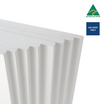
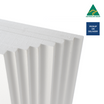


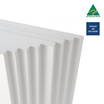


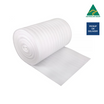
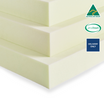

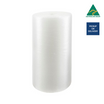



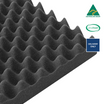

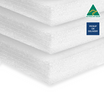
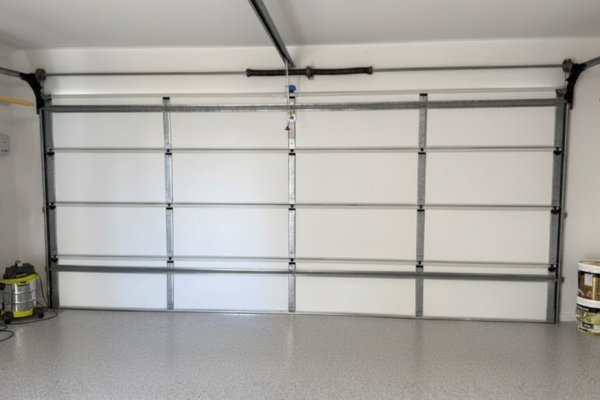

Leave a comment
This site is protected by hCaptcha and the hCaptcha Privacy Policy and Terms of Service apply.